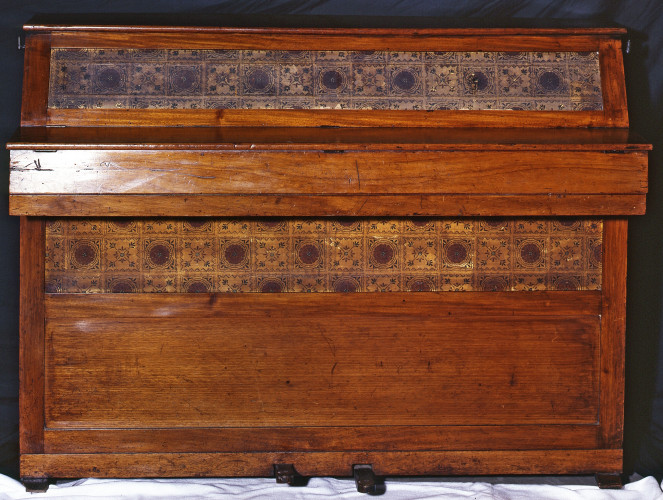The piano once belonged to the Pre-Raphaelite artist Ford Madox Brown who was fond of performing German music and English songs with his family and friends. It appeared as lot 4 in the sale of Madox Brown’s effects on Tuesday, 29 May, 1894, where it is described as having a panel designed by William Morris. The piano came into Madox Brown’s possession before 1860 as it was seen and admired by Edward Burne-Jones in the Madox Brown’s house, as described in Georgiana Burne-Jones’s “Memorials of Edward Burne-Jones”, 1904, vol. 1 p. 207:
“Mrs Catherwood gave us a piano (as a present for their wedding in 1860) made by Priestley of Berners Street, who had patented a small one of inoffensive shape that we had seen and admired at Madox Brown’s house; we had ours made of unpolished American walnut, a perfectly plain wood of pleasing colour, so that Edward could paint upon it. The little instrument when opened shows inside the lid a very early design for the “Chant d’Amour” and on the panel beneath the keyboard there is a gilded and lacquered picute of Death, veiled and crowned, standing outside the gate of a garden where a number of girls, unconscious of his approach are resting and listening to music.”
The Burne-Jones’s piano was given by the Burne-Jones family to the Victoria & Albert Museum in 1926 (Museum No. 43-1926.)
The patented Priestley piano had an ingeniously simplified piano action with only two moving parts as well as a compact soundboard.
